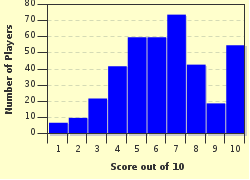Quiz Answer Key and Fun Facts
1. In 1836 Samuel Lyons, then the most prominent auctioneer in Sydney, went to the Supreme Court demanding 2,000 pounds compensation from the Sydney Morning Herald for libel. What scandalous truth about Samuel Lyons made it difficult for him to defend the quality of his character in court?
2. In 1846 Sir John Eardley-Wilmot was dismissed from his position as Lieutenant Governor of Van Diemen's Land. What was the official justification?
3. During the 1880s and 1890s a moral panic rose about a certain group using opium dens as a means for seducing young women into prostitution. Which group of people were accused of this?
4. In 1895 George 'Possum' Dean, a popular ferry-captain working on Sydney Harbour, was charged with the attempted murder of his wife. This case also became known as the Lemon Syrup Case because strychnine and arsenic were found in a bottle of lemon syrup Dean had used to mix drinks for his wife. What happened that caused the people of Sydney to see this case as such a scandal?
5. In 1920 Wagga Wagga was shaken by the 'Nun in the Nightgown' affair. Poor Sister Ligouri (Bridget Partridge) was the victim of both an attempted murder and a kidnapping. Who was responsible for perpetrating these offenses against her?
6. In 1954 Australia had its very own spy scandal: the Petrov Affair. Which of the following is NOT a true reflection of the involvement of ASIO (Australian Security Intelligence Organisation) in the defection of Vladimir and Evdokia Petrov?
7. It is difficult to talk about scandals in Australian history without mentioning the 1975 dismissal of the Whitlam government. Though formal justification for the dismissal had to do with the inability of the government to get bills through the upper house of parliament, it is widely accepted that it was the consequence of broader objections to the policies of the Whitlam government. Which agency has often been accused of having had a hand in manufacturing the dismissal?
8. Premier of Queensland from 1968 to 1987, Joh Bjelke-Petersen's name has become synonymous with nepotism and corruption in Australian government. During the 1980s Russ Hinze was one of Bjelke-Petersen's senior ministers. Which of the following portfolios was Hinze responsible for at the same time?
9. From 1897 until at least 1986 the Queensland government misappropriated funds that rightfully belonged to members of the population, and this has become known as the 'Stolen Wages Scandal'. Whose wages were stolen?
10. In the lead-up to the 2001 federal election, the Howard government used the 'children overboard' incident to help swing public sentiment back in their favour. It was later found that the government had misrepresented events in order to stir up public emotion about which controversial issue?
Source: Author
looney_tunes
This quiz was reviewed by FunTrivia editor
bloomsby before going online.
Any errors found in FunTrivia content are routinely corrected through our feedback system.

